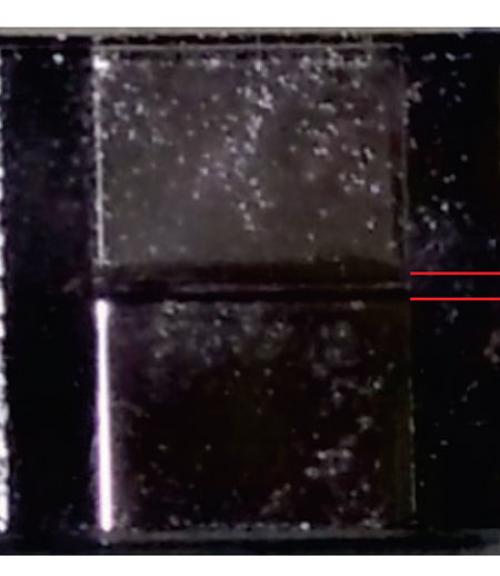The superfluid helium-3 has many notable qualities. With its low mass and small atomic size, it remains in a liquid state – and when it transforms to the superfluid state, flowing without resistance – down to absolute zero, or minus 459.67 degrees Fahrenheit. It is a pure system, without any disorder. And it is full of surprises.
A Cornell-led collaboration, which set out to study the superfluid’s thermal conduction, instead discovered a series of unexpected phenomena that reaffirm just how dynamic and unconventional the material is.
The group’s paper, “Thermal Transport of Helium-3 in a Strongly Confining Channel,” published Sept. 24 in Nature Communications.
The project was led by Jeevak Parpia, M.S. ’77, Ph.D. ’79, professor of physics in the College of Arts and Sciences, and his research group at Cornell, working with John Saunders, professor of physics at Royal Holloway, University of London.
Theoretical support was provided by Erich Mueller, professor of physics (A&S), and Dietrich Einzel at the Walther Meissner Institut in Germany. The paper’s lead author was former postdoctoral researcher Dmytro Lotnyk.
Helium-3 is a rare isotope composed of two protons and a single neutron. Its superfluid state was first discovered by Cornell physicists David M. Lee, Robert C. Richardson and Douglas Osheroff, M.S. ’71, Ph.D. ’73, in 1972. The discovery was a breakthrough in low-temperature physics and earned the researchers the 1996 Nobel Prize in physics.
For several decades, Parpia has been exploring the superfluidity of helium-3; in recent years he has focused on the effects that result from confining helium-3 in microfabricated devices. By confining the liquid in a constricted space and cooling it down to 2 millikelvin (approximately minus 459 F), the close contact with a surface material causes the thin layer of the superfluid to behave differently from how it does in bulk chambers.
“We are finding surprising effects when we confine helium,” Parpia said. “Thermal conductivity is a very ordinary property of a system, but the thermal conductivity in helium-3 has not been measured for more than 40 years. In a sense, it’s a little difficult to measure. The new phases that should be expressed in confinement could lead to all kinds of exotic transport.”
Working with the Cornell NanoScale Science and Technology Facility (CNF), the researchers fabricated a silicon device 1.1 microns high and 3 microns wide, with a 100 microns-long channel that separated two chambers, all capped with a polished glass lid. They flowed the helium-3 into the channel and planned to measure the thermal resistance – essentially as a dry run for a more in-depth study that would examine the material’s theoretically predicted phenomena. Those include the flow of heat along the edges of the device, and the way that imposing a temperature change in a longitudinal direction may also produce a lateral change in the system.
“We wanted to take the baby steps to this measurement,” Parpia said. “So the experiment was more or less a warm-up.”
However, when the researchers applied a heat pulse to one end of the device, increasing the flow of energy in the superfluid, they detected a response almost immediately on the other side. That’s because special excitations, which are an analogue of the quasiparticles found in bulk helium-3, were dislodged from the superfluid’s surface and traveled the entire length of the channel without interacting with ordinary excitations or diffusing their energy into the liquid.
“I think it’s amazing that these excitations can travel such long distances without dying or being annihilated,” Parpia said. “That’s one of the most surprising things. It just shouldn’t be happening. They’re so exotic, they’re not recognized by anything else.
“In the end,” he said, “it’s really a startling confirmation that there’s something very interesting concerned with these excitations.”
Parpia and his collaborators hypothesize that the flow of helium-3 and the resulting compression peels off these excitations, and runs them into the thermometer, where they deposit their energy.
The researchers now plan to microfabricate a device that can measure localized temperatures in the superfluid with greater precision.
“Ideally, we’d want to have 1,000 times more sensitive techniques to see all the phenomena,” Parpia said. “And we need to make much smaller devices to do that sensing, whereas what we’re doing is quite coarse. It’s basically a very macroscopic measurement.”
In addition to Mueller, co-authors included former postdoctoral researchers Anna Eyal and Abhilash Sebastian; Nik Zhelev, M.S. ’13, Ph.D. ’16; Michael Terilli ’19; SUNY Geneseo student John Wilson, who participated through the Cornell Center for Materials Research’s Research Experience for Undergraduates program; and research support specialist Eric Smith.
The research was supported by the National Science Foundation; the Engineering and Physical Sciences Research Council in the United Kingdom; and the CCMR, which is supported by the NSF’s Materials Research Science and Engineering Center program.
CNF, part of the National Nanotechnology Coordinated Infrastructure network, is supported by the NSF and by the Empire State Development Corp.
Read this story in the Cornell Chronicle.




